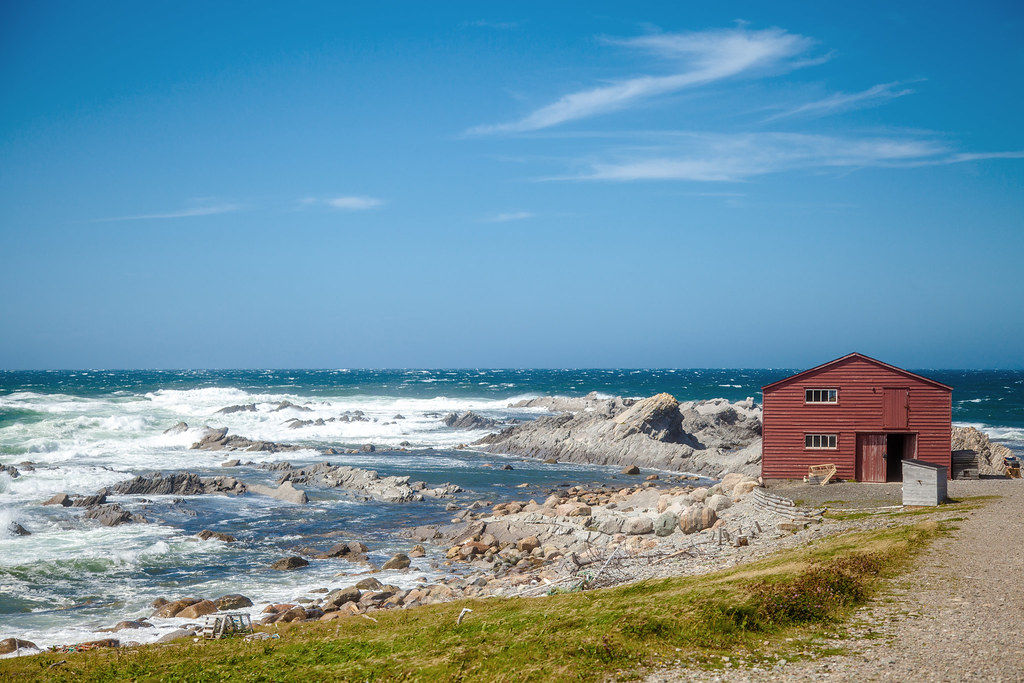
OUR PROGRAMS
BENTHIC HABITAT RESEARCH
Gros Morne’s coastline is diverse and dynamic, featuring long rocky shorelines, deep fjords and large, flat estuaries. Benthic – or sea-bottom – habitats in these ecosystems are where many commercially and culturally important species thrive. As a result, these habitats are crucial for maintaining biodiversity, protecting shorelines from erosion, and supporting key marine resources. We are conducting research to document the distribution of different benthic habitats in the Gros Morne region and improve our understanding of the marine life that depends on them.

Eelgrass Meadows
Seagrasses are marine flowering plants that live in shallow coastal waters and often form large meadows in sheltered coastal bays and estuaries. In Atlantic Canada, the dominant seagrass species is eelgrass (Zostera marina), which forms extensive meadows in shallow and sheltered areas with a soft (i.e., sandy or muddy) bottom. Eelgrass beds play a vital role in promoting ecosystem health and increasing species richness. They serve as nursery habitats for important aquatic species like cod and American eel, help fight climate change by sequestering carbon in sediments, and help protect coastlines from erosion. Unfortunately, seagrasses have been declining globally since the late 1800s due to a variety of natural and human impacts. In western Newfoundland, relatively little work has been done to map, monitor, and study eelgrass meadows and the marine life they support. As a result, our understanding of the health of these habitats is limited. Since 2022, we have been using various research techniques to identify locations where eelgrass meadows exist and to collect imagery and data that allow us to evaluate their health. At the same time, we collect data on temperature, depth and salinity to better understand the conditions in which eelgrass thrives and where it may be stressed or in decline. We also collect information on the density and distribution of the European green crab (Carcinus maenas), which is an aquatic invasive species that can degrade eelgrass meadows by damaging roots and rhizomes (the underground parts of the plant) while searching for clams and other invertebrates to feed on. Together, this research will help us make recommendations for conservation and management measures to help keep these habitats intact and support marine life and coastal communities for the long term.

Deeper Fjord & Inlet Habitats
The unique geological features of the Gros Morne region create a wide range of different benthic habitat types, each with their distinct ecological communities. These include habitats like seagrass meadows in very shallow areas but also many other important habitat types that are much deeper and more difficult to explore. To bring these deeper habitats, many of which occur in depths from 10 to 235 m and have not been well studied, up to eye level, we are using our remotely operated vehicle (ROV), baited underwater cameras and other technologies to collect exciting new data and imagery. The video footage we collect and analyze helps us learn, for example, about the cold, deep waters of the East Arm fjord of Bonne Bay where colourful soft corals, sponges, anemones, sea stars, and marine fishes thrive in large numbers on rock walls, and crustaceans like shrimp and crab dominate the flat sand bottoms of the deepest areas. Over time, we are building a detailed inventory of marine species and their habitats in Bonne Bay, St. Paul’s Inlet and the waters of the rest of the Gros Morne region. Come explore with us on our YouTube Channel!
